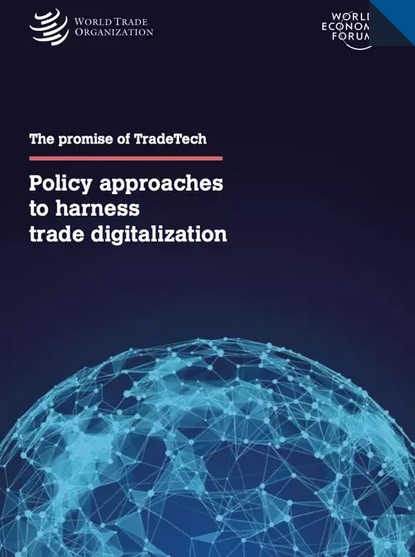WEF/WTO report endorses GS1 standards
The promise
of TradeTech:
Policy approaches to harness trade digitalization
The World Trade Organization and the World Economic Forum recently launched the new report The promise of TradeTech: Policy approaches to harness trade digitalization, it includes recommendations to make global trade more efficient, inclusive and sustainable.
The report references GS1 standards and recognises the power of identification of products and locations to take trade exchanges to the next level. Global Trade Item Number (GTIN), Global Product Classification (GPC) and Global Location Number (GLN) are all recognised as identification and classification solutions.

The report is recommending:
“With respect to physical and digital objects, governments could use trade agreements to promote the use of open, global standards for product identification linked to product classification systems, and encourage customs authorities to agree on a standardized treatment of IoT devices. Linking product identification systems with product classification systems, such as Harmonized System (HS) codes, could also prove very powerful and provide the global trading system with more information about products moving across borders and with new functionalities.”
Some of the statements in the report are referencing GS1 standards such as the below:
- “The GTIN uniquely identifies products both online and in-store, and border agencies are increasingly requiring traders to provide GTINs in addition to HS codes.”
- “Linking product identification systems, such as GPC and GTIN, and HS codes could prove very powerful and provide the global trading system with more information about product moving across borders and with new functionalities.”
- In addition to enhanced transparency of sustainable practices of stakeholders involved in international trade the “use of industry standards leads to better supply chain outcomes for all stakeholders such as improved product traceability and visibility across international borders; seamless sharing of regulatory documents and data accurately determining jurisdiction and risk profile for each product; and enhanced consumer safety related to unsafe, recalled or counterfeit products.” Moreover, these product identification systems could be linked to product classification systems, such as Harmonized System (HS) codes, to enhance transparency of supply chains and help to increase border efficiency
- With respect to identity of objects, trade agreements have focused on interoperability of product classification systems (e.g. HS codes) but disregarded interoperability of product identification systems and linkages between product classification and identification systems.
The references to GS1 can primarily be found in chapter 3 of the report.
Fuente: GS1
Autor: Jaco Voorspuij
Fecha Publicación: 29 APR 2022








